The Silent City, new book captures an empty Edinburgh during lockdown
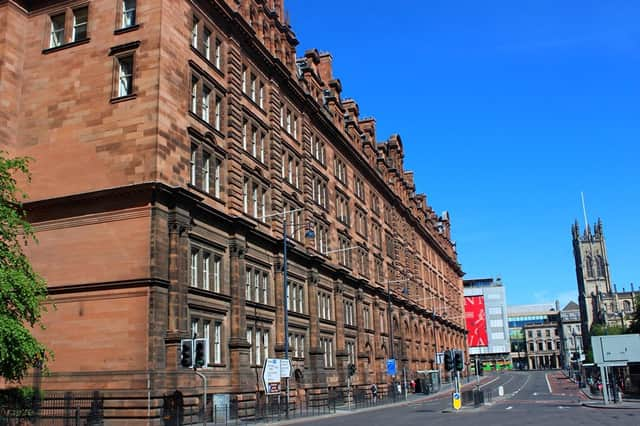

Now those photographs of streets devoid of people and cars are to be published in a new book, Edinburgh: The Silent City, accompanied by reflections on life in the Capital.
A concert pianist who teaches at the City of Edinburgh Music School, Stuart, who has lived in the city all his life, says, “Amidst the awful sadness and challenges for everyone since March this year I felt I wanted to do something positive. Living in the centre of Edinburgh my 'essential exercise' walk once a day took me right into the main streets of the Capital with my camera. I could not believe the scenes I was witnessing; in the middle of the day, deserted streets devoid of people and traffic."
Advertisement
Hide AdAdvertisement
Hide AdHe continues, “For years I would dream about these scenes. Now I was able to fulfil my dream and make a record of scenes that had not been possible before. Every photograph has a story to tell. I take photographs and write about what I see, the central image, the colour of the sky, specific features and anything that might be of notable interest.”
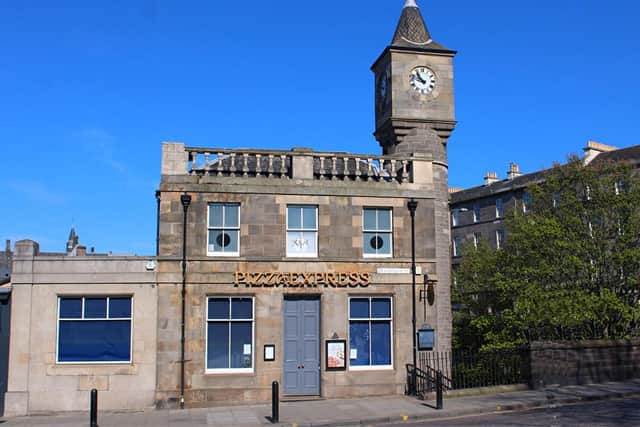

Uploading the images to his Facebook page, Stuart was amazed by the reaction they received, including a number of suggestions that he should gather them together in a book.
“I started uploading nine photos every week onto my Facebook page in a series called Beautiful Edinburgh which ran for 24 weeks,” he explains. “During the period between March and June I was receiving hundreds of happy messages from people all over the globe saying how much of a therapy this was - I seemed to be lifting people's spirits with my pictures."
Describing the book as “a diary of walks and journeys during the Coronavirus pandemic’, the book records a personal account of Stuart’s experienced during lockdown.
Advertisement
Hide AdAdvertisement
Hide Ad“Every day I appreciated an atmosphere of silence, tranquility and deserted streets. I discovered the astonishing ambiance of a Capital City in hibernation. I felt I had been gifted the keys to a beautiful city, the breathtaking grandeur of my home town felt more vibrant than ever.”
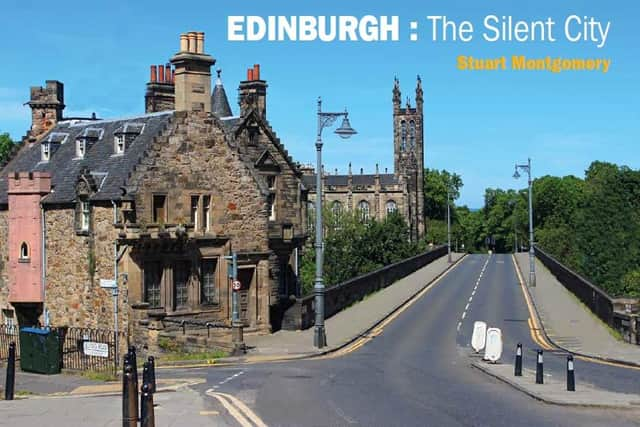

Stuart wrote a story for each photograph, a few of which we can reveal here. One of the images in the book shows the Caledonian Hotel as seen from Lothian Road.
“A scene to take the breath away,” is how Stuart describes the image.
‘Lothian Road on a sunny Saturday morning, just after the eleventh hour on the eleventh week of the Coronavirus lockdown,’ writes Stuart in the book. ‘I had to muster up all my concentration to position myself for this photograph, such was the sense of bewilderment at the stillness all around me. However, I didn't have to worry as nothing in the way of traffic materialised for several minutes.
Advertisement
Hide AdAdvertisement
Hide Ad‘On such a sunny summer’s morning, with St John's Church on the corner of Princes Street, it was joyous to be here alone. I have always wanted to get a picture with the sun shining on the Caley Hotel - such opportunities to do this present themselves only in the morning, but trying to capture a good photo is usually impossible owing to plethora of buses, cars, cyclists and pedestrians.’
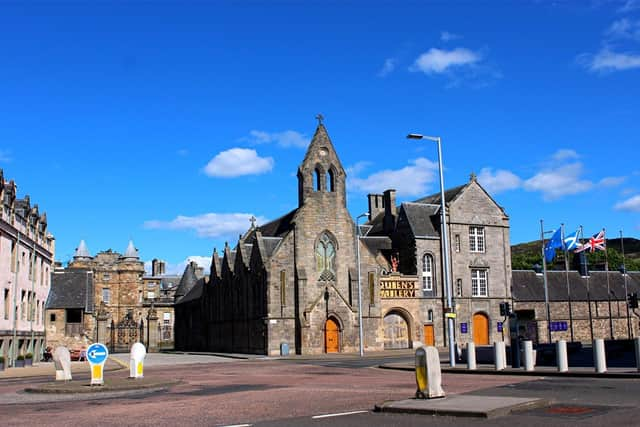

Another photograph features the Stockbridge branch of Pizza Express, which Stuart refers to as ‘Mr Monty’s Trumpton Clock’, a name the accompanying memory explains.
‘Once upon a time, when I was very little, my mum would bring me down the hill to the shops here and say, “What's the time on the clock?” I'd then say “It's 10 to 11 and that's the Trumpton clock.” Grown ups among us will remember the television series Trumpton, created by Gordon Murray and narrated by Brian Cant. At the start of Trumpton we see a large clock in the square and it looks similar to this - on this glorious day in April I could hardly believe my luck. A pure blue sky, the sun in the right place and no traffic or pedestrians.’
The familiar sight of Kirk Brae House and the Dean Bridge graces the cover of the book, again there’s not a soul to be seen.
Advertisement
Hide AdAdvertisement
Hide Ad‘The house on the edge of the Dean Bridge is Scottish Baronial, on five floors, three of them below the bridge,’ writes Stuart. ‘The original part of the house was built in the 1680s and was named Baxter’s House, associated with the flour mill in the valley below. Thomas Telford was the architect of the masterpiece design which forms the Dean Bridge, built in the 1830s.
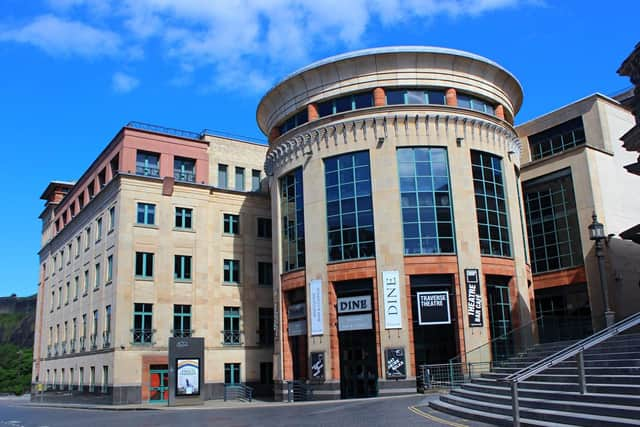

‘When I was little, I would cross this bridge each week to go to my piano lesson with the renowned Mary Moore, at 14 Ainslie Place. My mum always made sure I was smartly dressed, my hair brushed and my duffle coat neatly buttoned. I trotted along the right hand side here clutching my music case and would often say to myself, “When I grow up I will be able to see what’s over this wall”. Well, that day eventually came and I remember standing on tip toes, clinging on to the little spikes on top of the wall, and being quite wonder struck by what I saw. A beautiful garden, the Dean Gardens and…oh, look, a swing. I have always loved swings and even today I like to ‘have a go’ on them, as long as there’s nobody watching.’
Beside an image of the Palace of Holyroodhouse and nearby Queens Gallery, the photographer writes, ‘The buildings that form the Queen's Gallery at the foot of the High Street were built in the 1840s and when used as a place of worship it was called the Holyrood Free Church and Duchess of Gordon's School. Sadly, it fell into disuse at the end of the 19th century and was then heavily bombed during the Second World War. The gallery opened in 1962 and was closed only for three years from 1999 for extensive alterations. In 2002 Her Majesty Queen Elizabeth II opened the Gallery as part of her Golden Jubilee celebrations.
‘I came here on a Saturday afternoon around 5pm, with the sun shining all the way down the High Street, only possible in high summer, and it felt like the whole area had been cleared of vehicles and people, just for me to take this photo.’
Advertisement
Hide AdAdvertisement
Hide AdThe Traverse Theatre, one of Stuart’s favourite buildings in the city, also features in the book. He notes, ‘I feel that modern buildings need to have space around them to breathe, and to allow the passer-by to admire the depth of the design. Sometimes they appear crushed into an area, squeezed in between older buildings but the Traverse Theatre in Cambridge Street has a graceful eloquence which doesn't over-power the building, or the admirer. This is an excellent example of modern architecture with a generosity of the use of colour, shape and stonework. Captured on camera, on a sunny day like this it attracts the eye from a distance, and importantly, it doesn’t feel out of place alongside the Usher Hall.’
While most of the images lack any form of transport, one features two trams at its heart. It brings back memories for Stuart. “On the 31 May 2014 I met up with a few others at the Gyle Centre, where the first tram in Edinburgh since 1956 would start from. The time was around 5.30am and there were many people gathering. I was really excited and stood at the edge of the platform, hoping that the tram would stop and that the door would open in front of me. My wish was granted, but then - cue the drum roll – my jaw dropped as I saw a large camera looking right at me. I was about to appear on the BBC’s Breakfast Time and within half an hour I was receiving telephone texts at the rate of one every couple of minutes. My moment of fame, being on television.”
Finally, a photo entitled Waverley’s Ghost brings our sneak preview of Edinburgh: The Silent City to a close. The caption reads, ‘It is just after 4.30pm on a weekday afternoon in May, seven weeks after the Coronavirus restrictions began. Waverley Station is seen here asleep, and this felt distinctly eerie - the silence, the calm, nothing.’
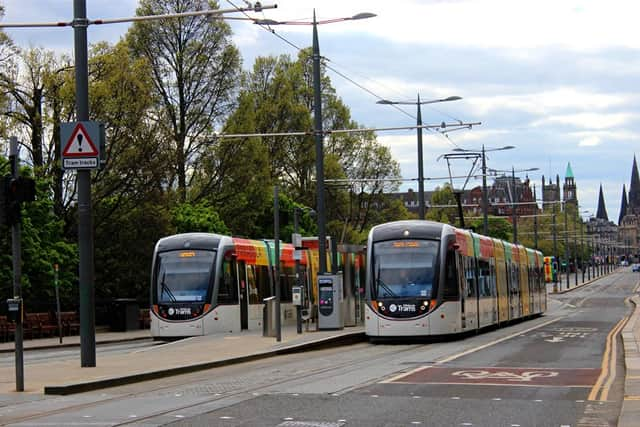

Stuart reflects, “For many years, I have been accustomed to taking my camera with me when leaving the house, on my walks to the shops or nearby gardens and parks along the river. Even when going to and from work I may see something of interest to photograph. This is a unique selection of scenes which will probably, and hopefully, never be seen again.”
Advertisement
Hide AdAdvertisement
Hide AdEdinburgh: The Silent City is due to be published in November with a portion of the proceeds going to St Columba's Hospice. Stuart explains, "They looked after my mum so wonderfully in her last weeks and I am dedicating my book to my father George who has always been my great guide and inspiration throughout my life.”
Edinburgh: The Silent City, by Stuart Montgomery, will be launched (socially distanced) Sunday November 22 at Blue Hairdressers, Dundas Street, 2pm-6pm and will also available from St. Columba's Hospice Shop, Canonmills
A message from the Editor:
Thank you for reading this article. We're more reliant on your support than ever as the shift in consumer habits brought about by coronavirus impacts our advertisers.
If you haven't already, please consider supporting our trusted, fact-checked journalism by taking out a digital subscription.
Comment Guidelines
National World encourages reader discussion on our stories. User feedback, insights and back-and-forth exchanges add a rich layer of context to reporting. Please review our Community Guidelines before commenting.